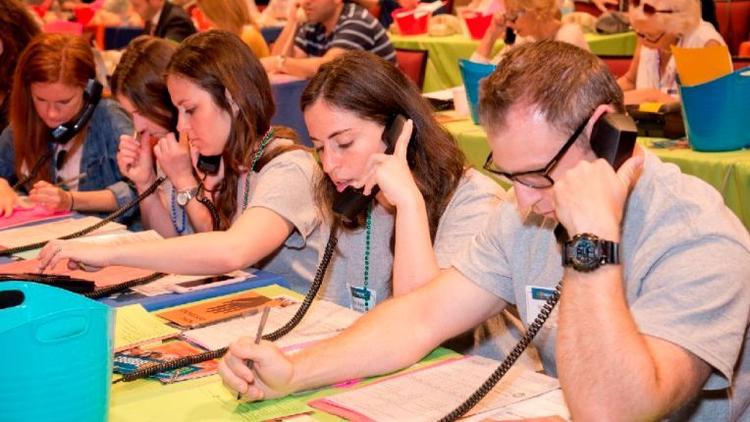How many Jews live in South Florida? Where do they come from? And what do they need?
Two new surveys, completed in May, are seeking answers to these questions and will determine whether South Florida maintains its status as the third largest Jewish population center in the United States. Results and an analysis are expected later this year.
The surveys, focusing on Palm Beach County Jewish life, will complement two surveys performed by Jewish federations in Broward and Miami-Dade, offering a complete picture of the demographics and needs of Jews in the tri-county area.
The Palm Beach County surveys of about 5,000 people were conducted for the Jewish Federation of South Palm Beach County, which includes Boca Raton, Delray Beach and Highland Beach, and the Jewish Federation of Palm Beach County. Both federations hired the Cohen Center for Modern Jewish Studies at Brandeis University in Massachusetts to update their last surveys, from 2005.
Matt Boxer, a Cohen Center assistant research professor, said he expects the Jewish community may be surprised by the assortment of ages, levels of education and extremes of wealth and poverty researchers are likely to find in Palm Beach County.
“You really have everything there,” Boxer said. “Whatever populations exist across the U.S., you have it in South Florida.”
In 2014, the Greater Miami Jewish Federation found 123,200 Jewish residents in Miami-Dade County, an increase of 9 percent over the previous 10 years. But a 2016 survey by the Jewish Federation of Broward County showed 149,000 Jewish residents, a decrease from 243,000 in 1997.
University of Miami demographer Ira Sheskin, who conducted the surveys for Miami and Broward, said Miami’s Jewish population increased mostly from a burst of immigration by Hispanic Jews.
This map shows the Jewish population based on the latest estimates available from local Jewish organizations. Palm Beach County estimates were updated in 2005, Miami-Dade in 2014 and Broward in 2016.
These immigrants come from countries such as Argentina, Colombia, Peru and Venezuela, and helped the Hispanic Jewish population expand by 57 percent over 10 years. Sheskin said they easily fit into Miami-Dade’s Jewish infrastructure, where synagogues offer services in Spanish and there are numerous Jewish schools and restaurants.
The Hispanic population in Broward also grew, from 3,600 in 1997 to 13,200 in 2014. But Sheskin said there are fewer bilingual synagogue services in Broward and less Latin-oriented programming, spurring most Hispanic immigrants to choose Miami-Dade.
Overall in Broward, the Jewish population fell, mostly due to the mortality of the large senior citizen population, Sheskin said. While there were 123,500 Jews older than 65 in 1997, there were only 46,500 in 2016. The number of seniors 75 and older also plummeted, from 77,000 in 1997 to 23,000 in 2016.
Sheskin said the deaths are not being replaced by births or new Jewish immigration. He said Northeasterners who move to Florida are choosing Palm Beach County, where there is a larger assortment of single family homes.
Bruce Yudewitz, the Broward federation’s chief operating officer, said the community was surprised by several trends gleaned by the study, including the growing number of LGBTQ residents (11 percent of households) as well as the assortment of Broward neighborhoods Jews are choosing.
“We learned the community is quite spread out,” Yudewitz said.
Although Jews used to concentrate in Tamarac, Sunrise and Hollywood, he said there are now large communities in east Fort Lauderdale and Parkland/Coral Springs. The federation opened outreach offices in downtown Fort Lauderdale and Coral Springs in response, he said.
Palm Beach County Jewish leaders say they are unsure what their results will show. The outcomes will determine where to focus their services, such as social workers, summer camps, food banks and senior citizen activities.
Stuart Silver, the south county federation’s vice president for community planning, said the questionnaires sought to discover the average age of residents, whether they are married and have children, the schools their children attend and how old their children are. He said respondents also were asked about where they live, their synagogue affiliation, Jewish issues of concern and what kinds of services they seek.
The most recent rigorous study of Palm Beach County’s Jewish community was conducted in 2005, when there were about 254,000 Jews countywide and an estimated 600,000 in South Florida. At the time, only New York had a larger Jewish population. Los Angeles has since eclipsed South Florida, with some counts showing more than 660,000 Jews.


























